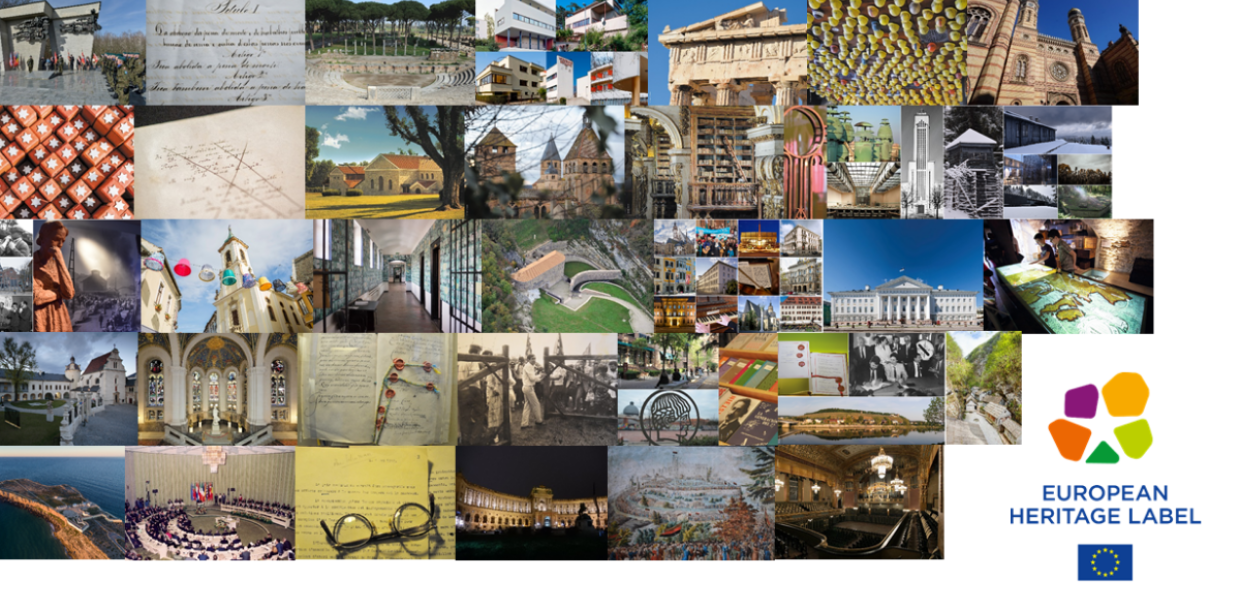What is the European Heritage Label?
The European Heritage Label (EHL) was established as an EU initiative in 2011. It aims to harness the potential of heritage sites to strengthen European citizens’ sense of belonging to the Union, as well as their appreciation of national and regional diversity, mutual understanding and intercultural dialogue. To this date, 48 sites have been awarded the Label across Europe.
The Label is awarded to sites that have a symbolic European value and develop a project to promote their European significance. In particular, EHL sites aim to raise awareness and understanding of the history of Europe, particularly through educational activities, and improve accessibility by promoting multilingualism and exploiting opportunities offered by new technologies and digital means.
Under the European Heritage Label action, sites can be monuments; natural, underwater, archaeological, industrial or urban sites; cultural landscapes; places of remembrance; and cultural goods and objects and intangible heritage associated with a place, including contemporary heritage.
The network of EHL sites covers over 100,000 years of European history, starting with Krapina Neanderthal Prehistoric Site and Museum where visitors can discover how the first human communities in Europe lived. Among other EHL sites, the Charter of Law of Abolition of the Death Penalty, Lisbon, and the Pan-European Picnic Memorial Park, for instance, embody the values of respect for human dignity and human rights, freedoms, equality, solidarity, citizen’s rights and justice on which the Union is founded. The network also includes sites that have played a direct role in the European integration process, including the European District of Strasbourg, the Village of Schengen and the Treaty of Maastricht.
The European Heritage Label is open to heritage sites located in the Member States of the European Union, and the following Member States have shown interest in taking part in EHL: Austria, Belgium, Bulgaria, Czech Republic, Croatia, Denmark, Finland, Germany, Estonia, Greece, Spain, France, Italy, Cyprus, Latvia, Lithuania, Luxembourg, Hungary, Malta, the Netherlands, Poland, Portugal, Romania, Slovenia and Slovakia. Explore the EHL sites’ map
European Heritage Label and digital tools
A key element of the EHL is raising the profile, attractiveness and accessibility of the sites on a European scale through the possibilities offered by digital tools, and EHL sites have varied steps to incorporate digital into their activities. The examples reported in the 2020 monitoring report particularly focus on:
Another major achievement of the European Heritage Label has been the promotion of multilingualism online, including through the EHL sites’ map, hosted by Münster and Osnabrück – Sites of the Peace of Westphalia, which is available in all official languages of Member States participating in the action.
The EHL action seeks to further exploit the opportunities provided by developing digital tools through the growing network of sites.
Joining the network of EHL sites
The pre-selection of sites for the European Heritage Label is organised by National coordinators in each participating Member State. The final selection of sites for the attribution of the label is carried out at European Union level every two years.
For more information, please visit the European Heritage Label website or contact the European Commission, Directorate-General Education, Youth, Sport and Culture at EAC-EUROPEAN-HERITAGE-LABEL-COORDINATION@ec.europa.eu.
For more examples of how digital can be used to support and enrich built heritage, explore Europeana’s page on New European Bauhaus.

